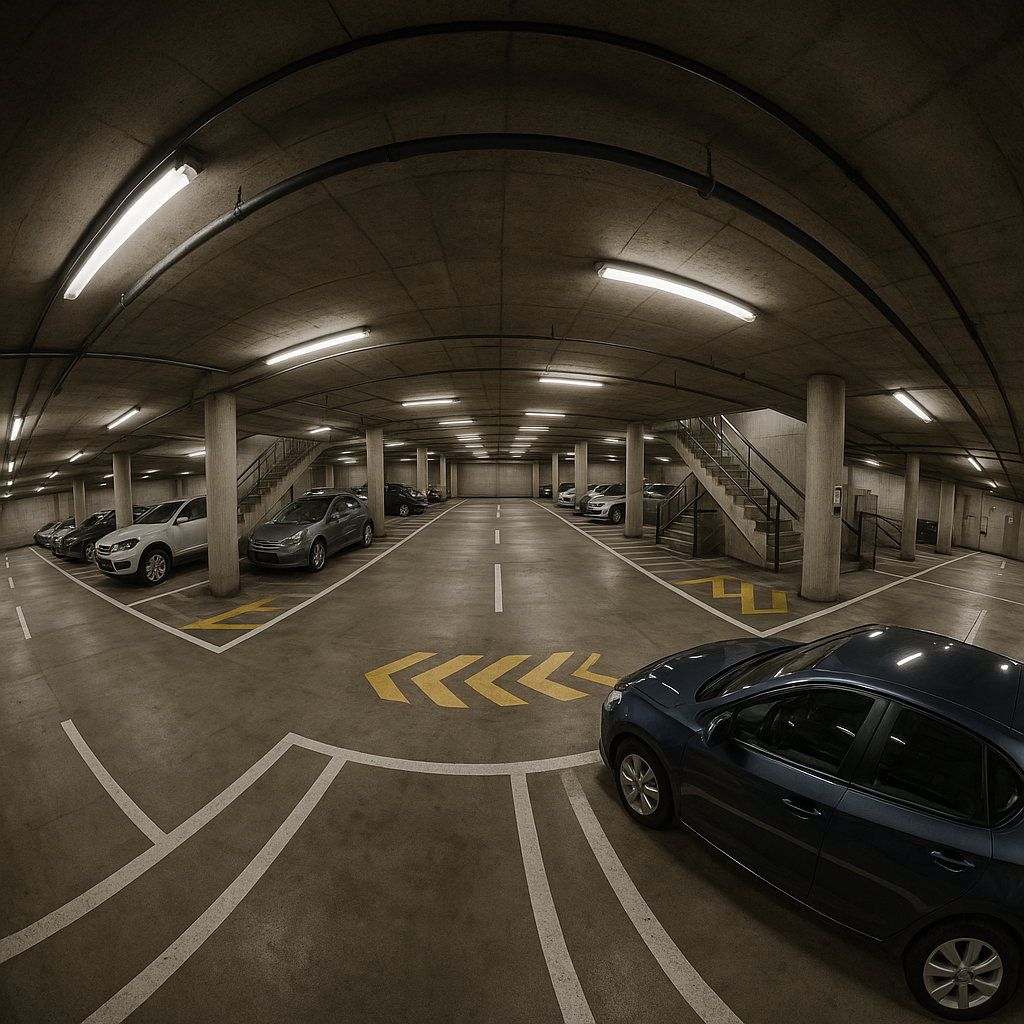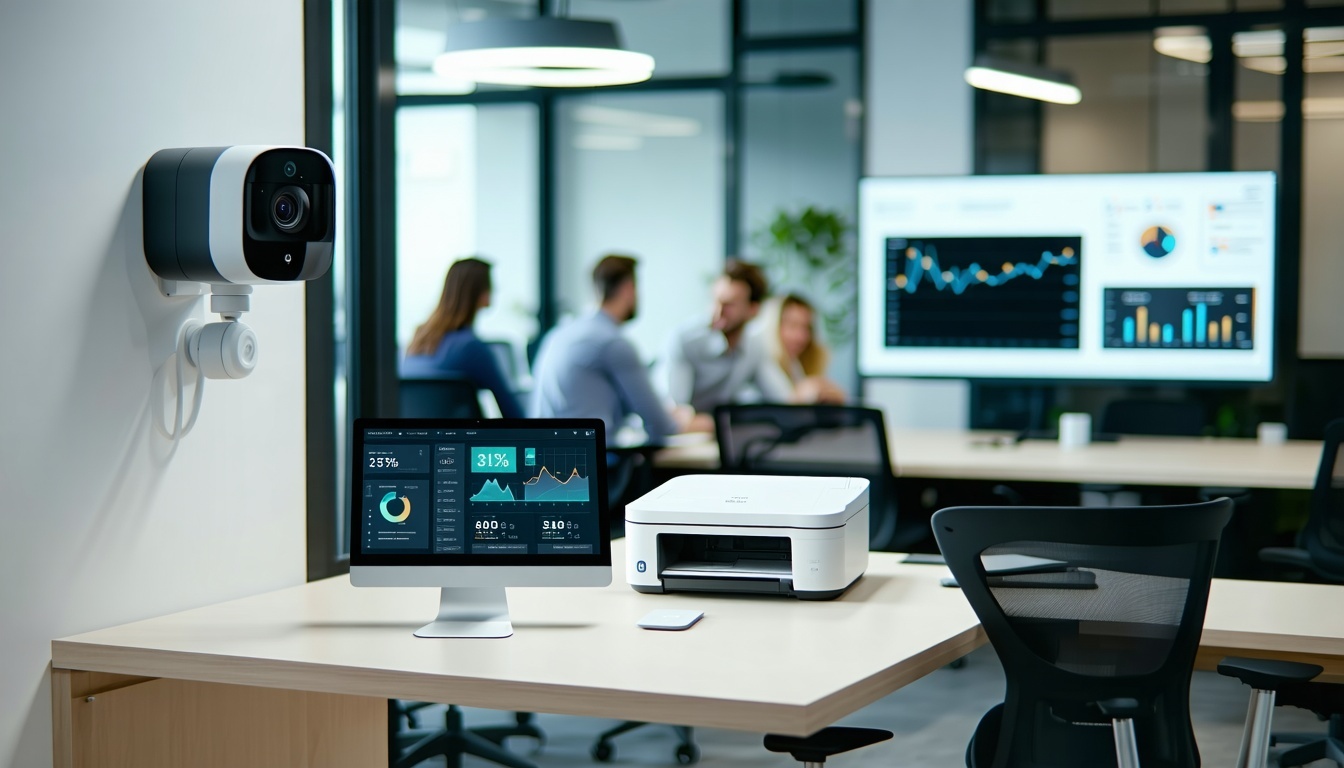Choosing the Right Security Camera System for Enterprise Parking Lots
Parking lots are high-risk areas for businesses. They are frequent targets for theft, vandalism, and liability claims. For facility and security...
4 min read
 Matt Hawthorne
:
Aug 18, 2025 12:25:31 PM
Matt Hawthorne
:
Aug 18, 2025 12:25:31 PM
Modern campuses are no longer confined to a single location. Universities, healthcare networks, and enterprise campuses often span multiple buildings and sites, creating complex security challenges. Enterprise IT teams must design surveillance systems that can scale, integrate seamlessly across different sites, and deliver reliable real-time monitoring. The stakes are high: poor coverage, bandwidth bottlenecks, or siloed monitoring can expose blind spots that compromise campus safety.
As of August 2025, advances in cloud-hybrid surveillance, video analytics, and centralized access control allow organizations to implement scalable multi-site security solutions. In this article, we’ll examine how to design a comprehensive surveillance system for large, distributed campuses, and why central monitoring, hybrid storage, and integrated access control systems are essential to maintaining effective security coverage.
Traditional security systems were built for single-site environments. They rely heavily on local storage, disconnected monitoring stations, and isolated alarm systems. On a multi-site campus, these outdated methods quickly collapse under the pressure of scale. Security teams must be able to:
For example, a large healthcare network with clinics across several cities must coordinate surveillance and access control to ensure staff, patients, and sensitive areas remain protected. A piecemeal approach would lead to gaps in coverage and delayed incident response.
At the heart of an effective multi-site security system is a central monitoring station. Instead of forcing local staff at each site to manage alerts in isolation, centralized platforms allow IT and security teams to view live feeds, manage alarms, and coordinate incident responses across all locations. This reduces duplication, improves situational awareness, and ensures consistent application of security protocols.
Deploying surveillance cameras across different campuses requires balancing coverage with bandwidth. Modern IP-based camera systems allow organizations to stream video securely while using bandwidth-efficient compression standards. Deploying cameras in high-risk areas—such as building entrances, parking lots, and research facilities—ensures that blind spots are minimized.
Storing video footage across multiple locations presents unique challenges. On-site storage alone is risky: a single system failure can wipe out critical evidence. Cloud-only models can strain bandwidth and raise compliance concerns. Hybrid cloud models solve this problem by keeping recent footage locally for fast access while archiving longer-term footage securely in the cloud. This approach provides resilience, scalability, and flexibility for different regulatory environments.
Video surveillance alone cannot prevent unauthorized access. Access control systems must be tightly integrated to create a complete security solution. For example, integrating door controllers with surveillance cameras allows security personnel to verify in real time whether an entry request is legitimate. When deployed across multiple sites, unified access control systems provide centralized policy enforcement, audit logs, and quick revocation of access rights when personnel changes occur.
No two sites are identical. A college campus may require wide-area coverage for student safety, while an enterprise headquarters may focus on building security and sensitive data centers. IT teams must assess the unique security needs of each site before designing the surveillance system. This ensures resources are deployed effectively without overloading the network or budget.
Streaming video across multiple locations can overwhelm unprepared networks. Effective deployments use VLAN segmentation, network prioritization, and bandwidth management to ensure security video does not disrupt other critical operations. Strong network security is also essential, as surveillance systems are frequent targets for cyberattacks. Encryption and strict authentication protocols should be non-negotiable.
Central management platforms unify security teams across different campuses. Instead of operating in silos, staff can coordinate responses to alarms, monitor live feeds from any location, and analyze video footage in one system. For example, if a breach occurs at one facility, the central team can immediately review access logs, pull video footage, and coordinate with local staff—all from a single dashboard.
Video analytics and AI have transformed how surveillance systems operate. Instead of relying solely on human monitoring, analytics can automatically detect suspicious behavior, identify abandoned objects, or alert security personnel to potential security incidents. For multi-site campuses, AI-driven monitoring ensures that even if one site’s staff is overloaded, the system itself can flag high-risk events for central review.
If you’re interested in what this looks like in practice, we’ve put together a guide on real-world advances: How AI is Transforming Video Analytics & Surveillance Technology: Proactive & Built for the Future.
Managing multiple security vendors across different sites creates unnecessary complexity. Standardizing on a unified platform ensures compatibility, simplifies updates, and reduces training requirements. It also lowers long-term costs by streamlining support and maintenance.
Effective multi-site security requires more than cameras. Combining video surveillance with access control, alarm systems, and visitor management tools creates a layered defense that reduces vulnerabilities. For example, if unauthorized entry is attempted, cameras provide verification, alarms trigger immediate alerts, and access logs help investigators identify the breach.
Campus needs evolve over time. Designing with scalability in mind—whether adding new buildings, expanding coverage areas, or integrating new analytics—ensures the system can grow without requiring a full redesign. Hybrid cloud models and modular hardware platforms are particularly effective for supporting future expansion.
Multi-site surveillance and access control systems are essential for modern campuses that span multiple locations. By centralizing monitoring, deploying scalable camera systems, integrating hybrid cloud storage, and unifying access control, organizations can strengthen campus security while streamlining operations. The most effective deployments combine technology with expertise—ensuring that every site, from classrooms to research labs, remains secure.
For teams evaluating their next steps, our detailed guide on choosing the right enterprise video surveillance system outlines the critical decision points. For organizations ready to move forward, our HD video surveillance solutions provide scalable, future-proof platforms designed for large campuses.
Request a custom site assessment to see how a tailored multi-site surveillance system can protect your campus today.
With more than 25 years in the industry, over 30 technical certifications, and a track record of more than 1,000 successful projects, Turn-key Technologies (TTI) has built a reputation for delivering reliable, real-world solutions. Clients across sectors trust TTI for precision, dependability, and long-term value.
As one client from the Times Union Center shared, TTI has been a true partner in delivering well-designed, budget-conscious solutions that meet project needs. That same expertise is applied to designing, installing, and supporting surveillance systems that deliver real-time visibility, layered access control, intrusion detection, and dependable performance for mission-critical facilities. Explore more real-world results in our case studies and see how TTI secures critical environments.

Matt Hawthorne is a Senior Solutions Architect at Turn-key Technologies, specializing in designing and implementing secure networking, wireless, and cybersecurity solutions. With over a decade of experience helping organizations modernize their IT infrastructure, Matt partners with clients to deliver scalable systems that enhance performance and resilience.
Certifications:
• HPE Aruba Networking Certified Network Architect – Campus Access
• HPE ATP – Hybrid Cloud
• HPE Aruba Certified Switching Associate
• Aruba Product Specialist – CX 10000 Switch
• Fortinet Certified Associate Cybersecurity
• Fortinet Certified Fundamentals Cybersecurity

Parking lots are high-risk areas for businesses. They are frequent targets for theft, vandalism, and liability claims. For facility and security...
1 min read
Protecting sensitive information and managing who accesses your network are top priorities for every organization. The old way of using just a...

7 min read
The Internet of Things (IoT) has brought incredible convenience and efficiency to organizations of all sizes. From smart sensors monitoring...